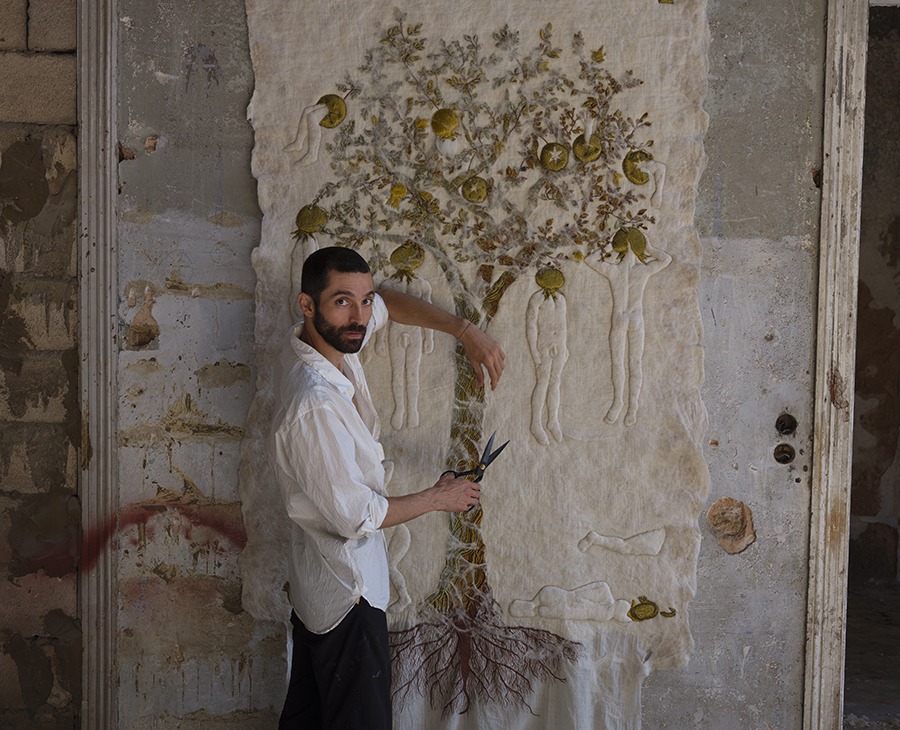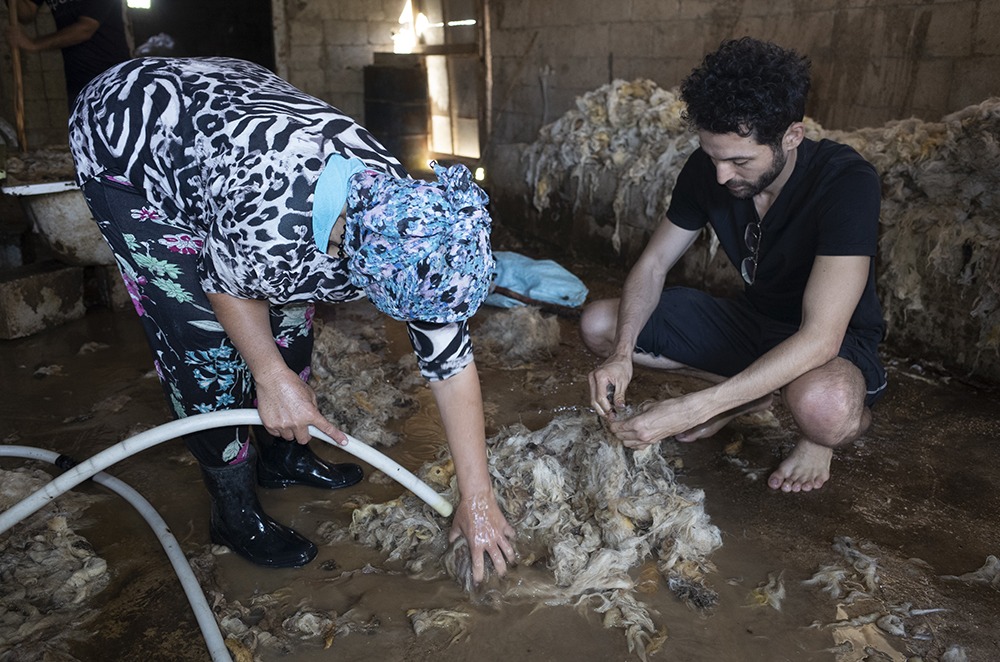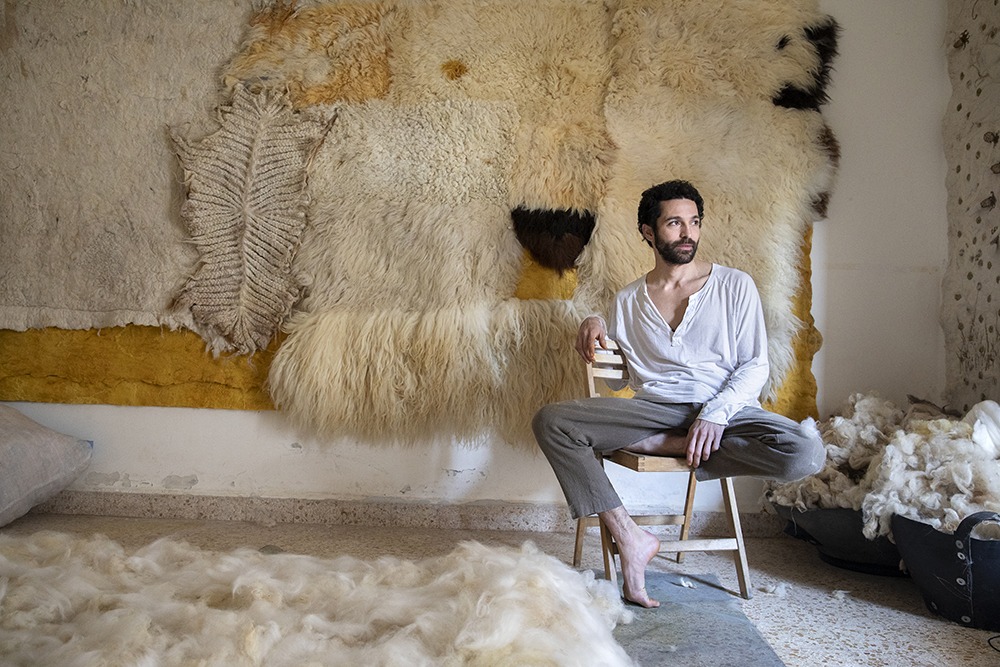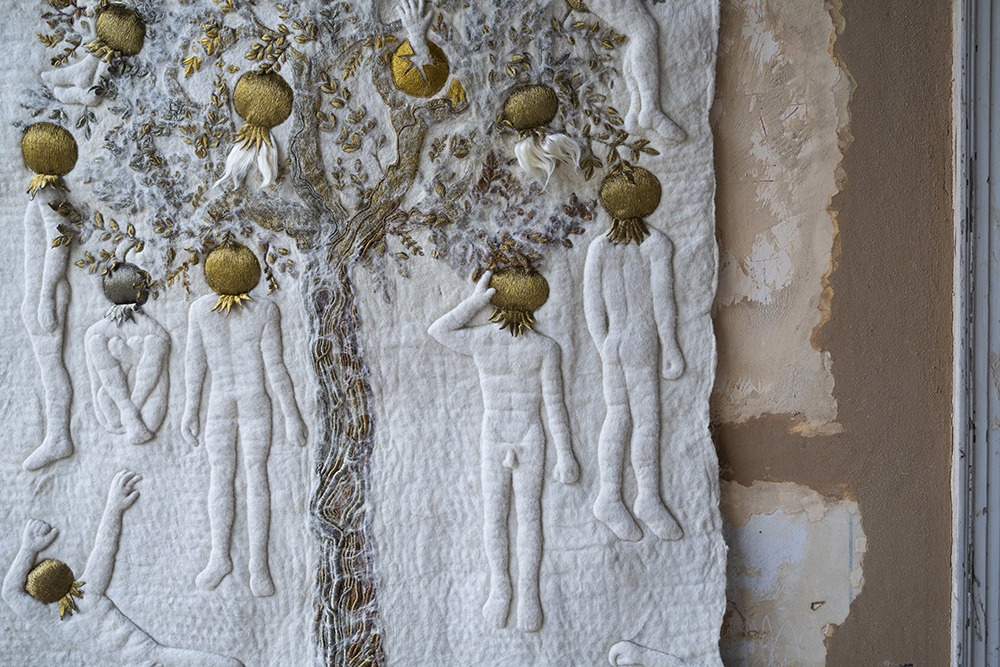Honduran-born fiber artist Adrian Pepe has spent the past decade in Beirut exploring the textile craft. We caught up with him in the Lebanese capital to learn more about his unique approach to fiber, the inspiration behind his recent project and why he loves Lebanon.
 What can you tell us about your artistic journey and how you ended up in Lebanon?
What can you tell us about your artistic journey and how you ended up in Lebanon?
The notion of place has always informed my practice and artistic journey. Never feeling quite settled in any single location or my own place of origin for that matter, I moved a great deal. I am constantly going through processes of rooting and unrooting. In being a stranger navigating strange lands, I would familiarize myself with new places through their materials and found objects. This was the case for me in Lebanon. Originally, I was invited to Lebanon to form part of Bokja, a textile and embroidery studio based in Beirut. While in Lebanon, moving through its countryside, I was confronted with the pastoral scenes which brought me to the fat-tailed awassi sheep. It is a close domestic relative bred in the region for over five thousand years. This is when I decided to stay.
 How would you describe your art?
How would you describe your art?
As a fiber artist, my works are textile based. They take the form of hybridized skins and soft sculptures laden with perspiration, emotions, mythologies and symbolism. I wish for people to reconnect to a sense of primalism, a return to the origins. It is as much an exploration of place as it is an exploration of the self.
What inspires you?
Anything and everything can be a source of inspiration; it all depends on one’s state of mind. One can extract a sense of aestheticism from mundane daily objects or found fragments of nature. Something I find myself gravitating toward are archeological objects and methods. A mentor of mine once shared with me the following statement: “The past is the future.”

Photo: Marie Ravn
What can you tell us about your recent “Entangled Matters 2.0” exhibition at Villa des Palmes in Beirut?
My latest public art installation and exhibition was held at Villa des Palmes in June 2024. Built by the Sursock family in the mid 1860s, the heritage building was originally used as stables on the street level and accommodation for the coachman on the first floor. It was heavily impacted by the Beirut Port explosion.
We wrapped the facade of the building in hand-felted wool textile produced in Lebanon. Felt — one of the oldest known textile —making processes, historically served various purposes, including shelter, clothing and wound healing. This artistic gesture reveals the latent potential within this indigenous material in offering a message of repair and resurgence after trauma, drawing parallels between the urban body and the human body, as they undergo healing processes.
The works featured inside the villa included a series of wall hangings, inflated soft sculptures and a performance, reflecting on the hybrid codes and entanglements that exist between ourselves and other-than-human agents.
 What do you enjoy most about Lebanon?
What do you enjoy most about Lebanon?
There are many things I enjoy about Lebanon: the stark contrast you find between the old and the new; the sense of legacy that the people carry with them as a marker of their identity and as a connector to the land; its divergent and shifting natural landscapes; and of course, its flora and fauna.
How do you spend your free time?
When I’m not at the studio or participating in art programming, I focus on self-care rituals involving movement practices and diet. I like to be in good company and enjoy mindful rural retreats.
What’s next for Adrian Pepe?
I hope to begin a love affair with a plant next, exploring new materialities.
——————————————————————————————————————————–
If you enjoyed this interview with Adrian Pepe, you can check out this article with this article with artist Nabil Nahas.
Loading
